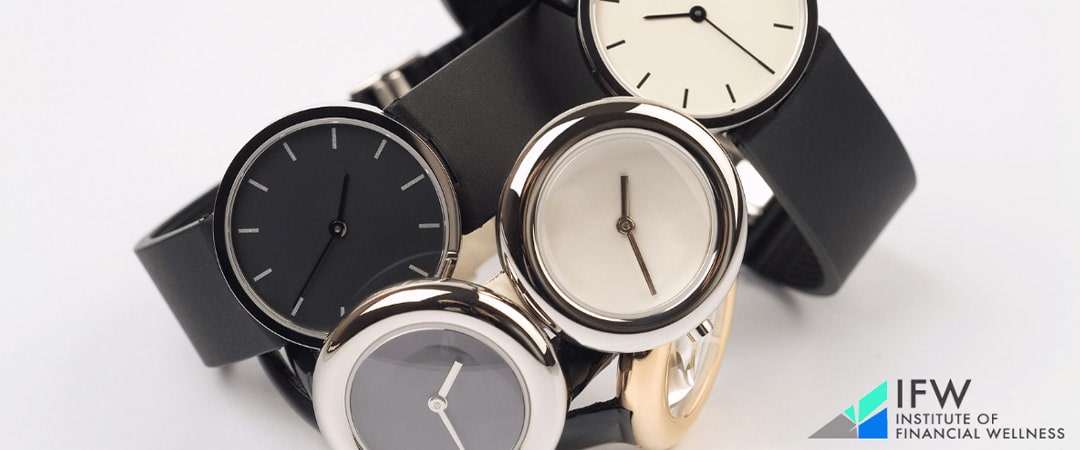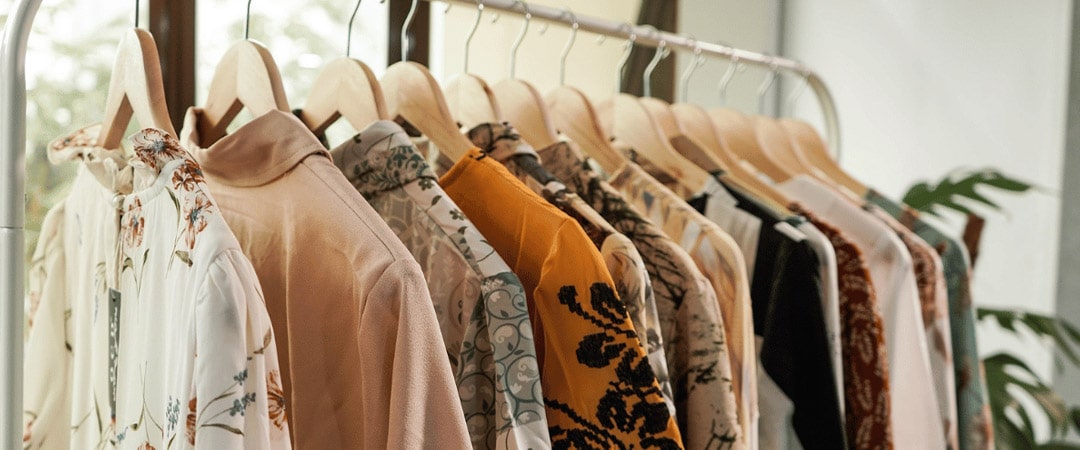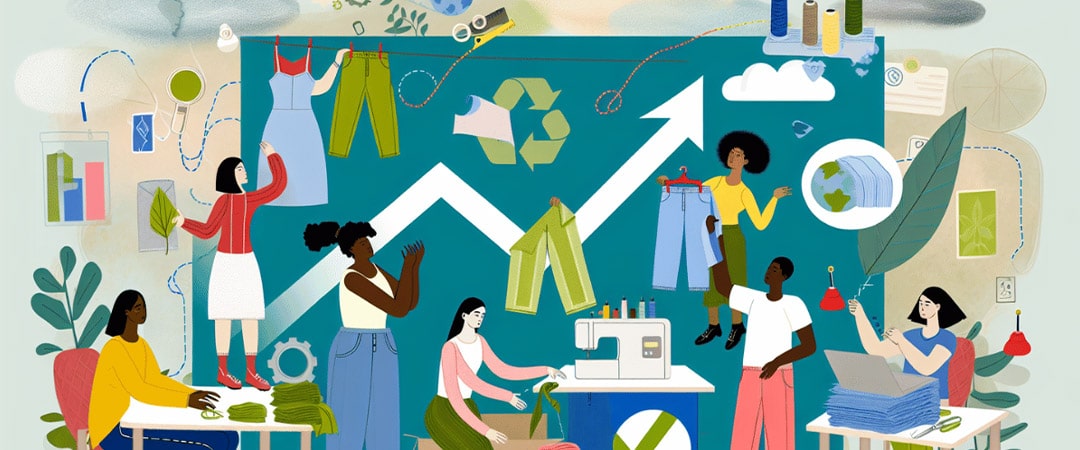“Fashion is not something that exists in dresses only. It is in the sky, in the street, in ideas, in the way we live, what is happening.” – Coco Chanel
Should you invest in fashion the same way you invest in stocks? As a matter of fact, selecting the right designer pieces can indeed become part of your investment portfolio. So, let’s delve into the glamour of the fashion industry to showcase how fashion investing can not only enhance your wardrobe but also contribute positively to your financial health.
To better plan for your financial future, be sure to check out our Retirement Road Map where we offer personalized guidance and strategies tailored to your specific financial goals and aspirations.
Key Takeaways
- Designer fashion items like bags, shoes, and watches can be seen as investments that retain or increase value over time thanks to rarity, exclusivity, quality, and brand authenticity.
- The resale market for designer fashion items is growing rapidly, driven by sustainability concerns and economic incentives, with some items fetching up to or even above 85% of their original retail price [1].
- Effective maintenance and care of designer fashion investments, including professional cleaning and proper storage, are crucial to preserving their appearance, value, and longevity.
The Art of Fashion Investment
In the ever-changing world of fashion, it might seem surprising that luxury items such as designer bags or shoes can be considered investments [2]. Yet, the fashion industry has evolved beyond simple consumption. Currently, the focus is on strategic acquisitions of items that, similar to stocks or real estate, maintain or even increase their value over time.
Fashion investment is not just about buying the most expensive or most popular items in the market. It’s about understanding the value of:
- Rarity
- Exclusivity
- Quality
- Brand authenticity
These factors determine the resale value and potential financial returns of fashion items, making them a wise choice for spending money. It requires a shift in perspective – from buying items based on trends to assessing their long-term value, viewing the wardrobe as a financial asset that can contribute to one’s fiscal security.
Understanding Fashion Investments
What does the term ‘fashion investment piece’ imply? It refers to a luxury item that, despite its premium price tag, retains its value over the years. These pieces are often associated with emotional attachment and milestones. Think of the Chanel bag you bought to celebrate your first big promotion or the Rolex watch you inherited from your grandfather. These items are not just symbols of luxury fashion; they also represent significant moments in your life.
The assessment of fashion investments involves estimating their ability to maintain or grow their value over time. This can be done through cost-per-wear calculations. For instance, if you buy a designer bag for $2000 and use it for 200 days, the cost per wear is $10. If the bag can be resold for a higher price after many years of use, then it’s a good investment. Remember, while celebrity endorsements can temporarily drive sales and increase the short-term value of fashion products, they do not guarantee long-term value retention.
The Growing Resale Market
The mounting interest in fashion investment is closely tied to the burgeoning resale market. According to forecasts, the global fashion resale market is anticipated to grow by 127% by 2026, surpassing the expansion of the broader fashion retail sector. This growth is driven by factors such as sustainability concerns and economic incentives [3].
Fashion items like the Bottega Veneta Sardine bag, the Fendi Baguette, Loewe’s Paseo Bag, and Prada’s 1995 tote have seen significant search demand and indicate substantial resale potential. Unique designs such as The Row’s 90’s Bag and Miu Miu’s mini bags are also gaining traction, showcasing a shift in consumer interest and their potential for long-term value in the resale market. Resale platforms such as The RealReal, Poshmark, and eBay are integral to the resale ecosystem, helping establish market-driven resale values.
Timeless Pieces to Invest In

Having grasped the concept and potential of fashion investment, we can now explore the items that constitute wise investments that will allow you to continue to live comfortably. While it may be tempting to splurge on the latest trend or a flamboyant piece that catches the eye, the real value lies in timeless pieces. The pillars of a well-curated wardrobe that transcends fleeting trends are:
- Iconic shoes
- Designer bags
- Quality watches
- Staple wardrobe items
These items are considered wise investments in the fashion world, as they can potentially bring more money in the long run.
These pieces not only offer enduring style but also hold their value over time, making them excellent investment pieces. The versatility of these items is another factor to consider. A classic trench coat or a little black dress can be styled in numerous ways and worn on various occasions, ensuring that you get the most out of your investment.
Classic Designer Bags
In the realm of fashion investments, the appeal of designer bags is hard to ignore. Iconic bags such as the Hermès Kelly, Louis Vuitton Neverfull, and Chanel bags have proven to hold their value over time. These bags often double in price, making them robust investment pieces.
Some designer bags, like Fauré Le Page Totes and the Loewe Paseo Bag, have strong resale values, fetching close to or above 85% of their original retail price on the resale market. The enduring appeal and stable value of bags like the Hermès Kelly 28 and the Louis Vuitton Neverfull MM demonstrate their potential as long-term fashion investments.
Quality Watches

Luxury watches serve as more than mere status symbols; they represent notable investments renowned for their fine craftsmanship and prospective value appreciation. Brands like Rolex, Patek Philippe, and Audemars Piguet produce watches that are not just a means to tell time but a work of art, a testament to the skill of their craftsmen, and a symbol of a luxurious life.
Models like the Rolex Submariner (ref. 114060), Patek Philippe Aquanaut 5968G-010, and Audemars Piguet Royal Oak Offshore Chronograph are revered for their luxury design and limited production, enhancing their value as investment pieces. Rolex watches, such as the Rolex GMT Master II and the Omega Speedmaster First Omega In Space, have maintained or increased their value over time due to their iconic status and limited runs.
Staple Wardrobe Items
Although the charm of designer bags and luxury watches can be enticing, the significance of investing in classic wardrobe staples should not be underestimated. The classic white button-down shirt is a timeless wardrobe staple, enduring as an essential fashion item that pairs with a variety of styles for a sophisticated look.
Quality jeans, too, represent a smart fashion investment, offering versatility for numerous occasions and exceptional durability, ensuring they last and retain their appeal over time. Investing in such staple items aligns with the concept of quiet luxury, emphasizing:
- simplicity
- classic styling
- premium quality
- durability
Factors to Consider When Investing in Fashion

Investing in fashion entails more than simply purchasing expensive or popular items. When making astute choices regarding fashion investments, there are several key factors to take into account. Sustainability has recently risen to prominence within the fashion industry due to growing consciousness about environmental effects and consumer demand for eco-friendly products.
When choosing pieces for your fashion investment, it’s important to consider:
- The legacy of the brand
- Authenticity
- Quality
- Compatibility with personal style
It is imperative that these principles guide your decisions when investing in fashion pieces. Invariably, informed decisions regarding such investments can lead to profitable outcomes.
Brand Heritage and Authenticity
The historical significance and genuine nature of a brand greatly influence the value of fashion investment pieces. High-performance brands in apparel resale, such as Gucci, Louis Vuitton, and Chanel, boast significant heritage, which underscores their importance within the realm of fashion investments.
Brands rich in heritage capitalize on their long-standing reputation to exhibit greater stability and appeal when it comes to investment items. Uniformity in communication, core values, and distinct visual identity enhance the sense of authenticity associated with these brands. This perception bolsters consumer confidence and establishes trustworthiness for the brands involved.
Quality and Craftsmanship
Investing in fashion items involves critical consideration of fabrics, styling, and design aesthetics. It is the high-quality materials that promote both durability and a timeless appeal in pieces that maintain their value over time. The addition of artisanal craftsmanship, which boasts a painstaking focus on detail and age-old methods, infuses even greater value into fashion articles.
Unique artisanal pieces are highly sought after in the realm of fashion by those who appreciate exclusivity and clothing with a story to tell. Opting for investments rooted in artisanal skill is seen as a socially responsible investment within the industry due to its tendency towards sustainable practices while also yielding long-lasting products.
Personal Style and Versatility
Personal style and versatility are significant factors to consider when investing in fashion. Fashion serves as a medium for personal expression, allowing individuals to communicate their identities and values, which, in turn, fosters their creativity and self-confidence.
A pair of quality jeans and a classic white button-down shirt are examples of versatile fashion investments that offer numerous styling opportunities, making them perennial favorites in a well-curated wardrobe. Understanding StyleDrift, the natural evolution of personal style, is essential in making fashion investments that align with changing tastes and lifestyles.
How to Maintain and Protect Your Fashion Investments
Now that you are starting to decide how to invest in fashion, you have only traveled half the journey; maintaining and safeguarding these investments is the other crucial half. Regular professional cleaning and timely repairs are essential to maintaining the appearance and structure of fashion investment pieces. Different materials require specific cleaning techniques; for instance, leather should be conditioned, and fabric should be steamed to maintain its best condition.
To prevent damage, store fashion investments away from direct sunlight, in low-humidity environments, and with proper supports like shoe trees or padded hangers. Proper maintenance not only preserves the appearance and functionality of your fashion investments but also enhances their resale value.
Use breathable garment bags or boxes, preferably made of muslin or polypropylene, to protect garments from dust and moisture. Store leather and denim items with dust covers or breathable garment bags to prevent dye transfer and damage. Lay garments flat, wrapped in breathable, acid-free tissue, and stored in a breathable box to prevent pressure and creasing.
Regular Maintenance
In addition, routine upkeep is key to maintaining the prime condition of your fashion investments. Items with difficult stains or marks should be taken to professionals specializing in high-value fashion for cleaning or repair. Treating spills and stains on luxury garments immediately can prevent lasting damage.
To maintain the appearance and functionality of your luxury items, here are some tips:
- Keep a sewing kit for minor repairs
- Regularly inspect your items for issues like loose buttons or broken zippers
- Use accessories such as handbag hangers to avoid contact with dirty surfaces
- Regularly check your items during storage to catch any potential issues early
Following these tips will help preserve your fashion investments.
The Future of Fashion Investments
The outlook for investment in the fashion sector is promising as consumer preferences increasingly gravitate towards digital interfaces, eco-friendly practices, and engaging experiences. Brands such as Shein and Temu are poised to expand within the quick-paced realm of fast fashion by employing strategies that focus on analytics-driven styles and fostering strong community ties.
Innovations like augmented reality fitting rooms and sophisticated body measurement analysis are revolutionizing the fashion landscape, opening doors to investments that prioritize custom solutions and ecological consciousness. Such advancements signal a significant evolution in both where the fashion industry is headed and where opportunities for investors lie.
Sustainable and Ethical Fashion

Sustainability and ethical considerations are increasingly influencing fashion investment. Purpose-driven brands that resonate with customers by aiming to make a positive impact on the world can create authenticity and meaning. Millennials and Gen Z are seeking authentic brands that reflect their values, showing a willingness to support social causes through their fashion choices.
Iconic brands with a strong heritage, like Gucci and Burberry, are shifting away from misleading sustainability claims and aligning with consumer expectations, which could enhance their long-term investment potential. Companies innovating in textile recycling, such as Evrnu and Infinited Fiber Company, are noteworthy for potential investors tracking sustainable advancements in the fashion industry.
Emerging Designers and Brands
Emerging designers are gaining attention as potential investment opportunities, with innovative styles and a fresh perspective on fashion. Their influence is evidenced by displays at prestigious events such as New York and Paris Fashion Weeks and wear by high-profile celebrities.
Designers are presenting a myriad of unique and forward-thinking aesthetics, from vibrant and dynamic clothing to artisanal craftsmanship and period-influenced styles. Select emerging designer items, like the Luar Ana Bag, have quickly become sought-after on the resale market, signaling commercial success and investment potential.
The Institute of Financial Wellness (IFW): Your Trusted Partner for Comprehensive Financial Education and Resources
The Institute of Financial Wellness (IFW) proves to be an indispensable companion for financial education and resources. We offer:
- Engaging, informative, and objective financial education content
- A comprehensive multi-media network
- Resources and services to help individuals learn about finance in an enjoyable and easy-to-understand way.
In addition, the Institute of Financial Wellness (IFW) extends its services to include a network of financial professionals well-versed in various financial aspects, including specialized expertise in fashion investing. When you choose an IFW Financial Professional, rest assured that we are aligned with the IFW philosophy, emphasizing the understanding that financial decisions, especially in fashion investments, demand a tailored and comprehensive approach. The IFW not only equips you with essential education and facts but also ensures you receive guidance from comprehending your unique situation and making informed decisions in the realm of fashion investing. Get in touch with a financial professional today!
Full Summary
Fashion investment is an exciting realm that combines personal style with financial acumen. From understanding the concept of fashion investment to identifying timeless pieces, assessing the factors to consider when investing, and learning how to maintain and protect your investments, we covered all the bases. The future of fashion investment looks promising, with sustainable and ethical fashion, emerging designers, and the role of digital platforms shaping its direction.
Remember, fashion investment isn’t just about owning luxury items; it’s about making strategic choices that can contribute to your financial security. So, the next time you eye that designer bag or watch, remember that it’s not just a fashion statement; it’s a potential gold mine!
Frequently Asked Questions
Can fashion be an investment?
Yes, fashion can be an investment, particularly luxury pieces with higher price tags have shown a trend of increasing value over time.
Is it good to invest in clothing?
Certainly, allocating funds towards high-quality clothing pieces can be a judicious economic move since they provide an array of styling possibilities and adaptability for diverse events. Such well-constructed garments allow for numerous combinations and the flexibility to either elevate or simplify one’s look.
What is a fashion investment piece?
An investment piece in fashion signifies a luxurious item that, despite its premium price point, retains its value over an extended period and thus represents a valuable long-term acquisition.
Why is the resale market important in fashion investment?
The resale market is important in fashion investment because it allows investors to sell their items at a profit, enhancing their potential returns.
What are some timeless pieces to invest in?
Invest in timeless pieces like iconic shoes, designer bags, quality watches, and staple wardrobe items such as a white button-down shirt or quality jeans. These items hold their value and never go out of style.




